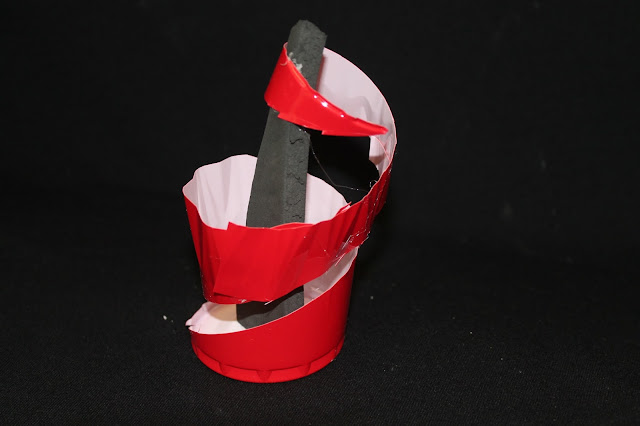In this model I tried to show Chaos vs. calm. If you look at the right of the model you see chaos,use of different materials, extrusion, every material takes your eye to a different direction. There is too much going on but if you look at the left you see one simple shape where you can rest your eyes.
This model shows the concept of chaos vs. calm. Use of different materials put together on the left make you restless. On the other hand on the right there is a mesh that is simply shaped and shows elegance.
In this model I tried to show Active/ Alive. The big mesh creates a big wave showing movement and if somethings moving it is active. The wire reminds me of energy which travels in spiral motion which makes it look alive.
This model shows Alive/Active. to my understanding everything that moves is alive so I tried to show movement through this model. There is a vertical shape that is still and this spiral shape that wraps it and changes the thickness. It makes your eye move point to another.
In this model I tried to show private vs. public. The front of the model shows this big opening which is very welcoming and public. While in the back the mesh and the fabric creates a shadow which makes it look more private.
In this model I tried to show private vs. public. The wood block is a solid shape which is very public because you cant see through it. If you look at the square shape in the front in is covered by the mes but you can still see through which makes it more public.






The more successful of your images is when you have been thoughtful and careful about the view and angle of the photograph. You have the opportunity of two arts merging in this exercise. It is about the model and how you have put pieces together to tell a story, but it is also about the photograph. You have the opportunity to work with photographic techniques to enhance the story and the drama. For example in the most simplistic sense you could have what is in the foreground be in focus and the background out of focus....or vice versa.
ReplyDeleteI think you could spend more time developing your thinking about your ideas. The model or the photograph are just representations of your ideas...they are communication tools. If the ideas are strong then you have much more to work with. For example on "Alive/Active. to my understanding everything that moves is alive..." -- what about a car? It moves. Is it alive? or a ball that is kicked. It moves. Is it alive? A planet orbits around the sun. Does this make it alive? I think I know what you meant, but being more articulate and clear in your explanation and thinking may help you to better articulate your ideas through your models.
Lastly, if you are not already familiar with the work of Bernard Tschumi, I think you may find it interesting. He has experimented a lot with abstract or compositional models. http://www.kmtspace.com/tb-villette5.jpg or https://s-media-cache-ak0.pinimg.com/736x/36/ca/65/36ca65ae9fddd7be903c5b5c389fda43.jpg His book Event Cities - http://www.tschumi.com/media/files/00156.jpg has a plethora of black and white photographs of models and early 3d models....I am not sure how the new versions 2, 3 and 4 fare.
The public/private model's image(one before the last) is an interesting one as it has spatial qualities. The merging of two materials with different porosities and levels of transparencies (fabric/mesh) is an interesting exploration. Both the fabric and the mesh are very plastic and malleable. This could be tricky as they allow for easy free form spatial explorations. Start looking into the tectonics of both of these materials. Look into folding as well as tension/compression systems. Similarly the active/alive model starts having a formal language that needs a lot of exploration.
ReplyDelete